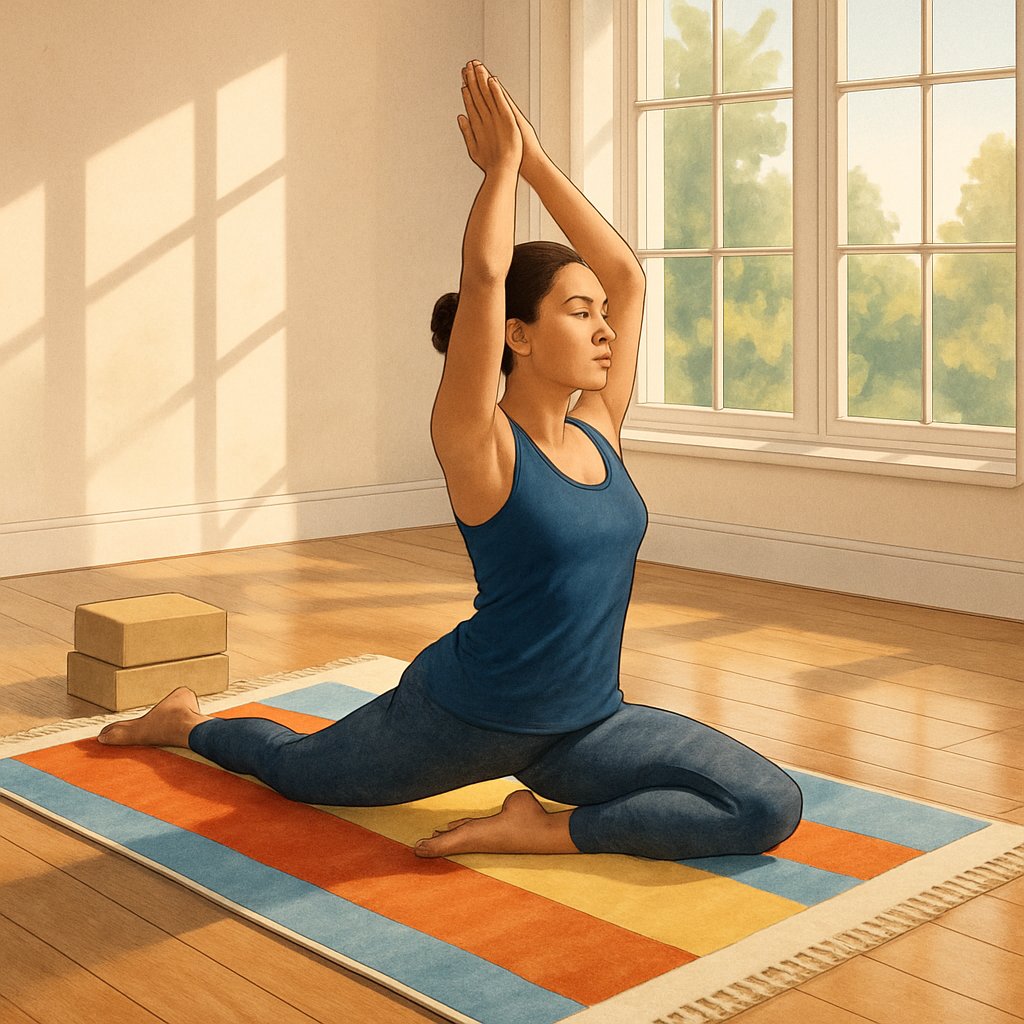Looking for the best yoga mat alternative? The answer is: You can use towels, blankets, rugs, carpets, natural grass, or even special yoga grip socks and gloves as excellent substitutes for a traditional yoga mat. Each option offers unique benefits, whether you need portability, eco-friendliness, or extra cushioning.

Choosing the right yoga mat alternative is important for comfort, safety, and your yoga experience—especially if you’re traveling, practicing at home, or prefer a minimalist lifestyle. In this guide, you’ll discover the best options, real-world tips, and answers to common questions about practicing yoga without a traditional mat. Read on for actionable advice, updated info, and expert recommendations!
For official yoga safety and alignment tips, see the Yoga Alliance Guidelines.
Why Consider a Yoga Mat Alternative?
There are many reasons you might need a yoga mat substitute:
- You forgot your mat or are traveling
- You want an eco-friendly or minimalist practice
- You dislike the feel or chemicals in synthetic mats
- Practicing outdoors or on the go
Traditional yoga was practiced without mats! Many ancient yogis used natural surfaces like grass, dirt, or woven blankets. Today, there are even more practical and comfortable options available.
Top 7 Yoga Mat Alternatives (With Pros & Cons)
1. Large Towel or Beach Towel
A large towel or beach towel is the easiest and most common substitute.
- Pros: Lightweight, washable, portable, good for travel.
- Cons: Less grip on slick floors, can bunch up during vigorous poses.
Tip: Use a textured or thicker towel for more cushioning and slip resistance.
2. Woven Blanket or Mexican Yoga Blanket
These are thicker and offer more cushioning.
- Pros: Comfortable, doubles as a yoga prop (for knees, hips, or restorative poses), eco-friendly (cotton/wool).
- Cons: Less traction on polished surfaces.
Example: Many yoga studios use woven blankets in their classes (Welltech, 2024).
3. Rug or Carpet
Practicing on a rug, carpet, or a dedicated natural fiber rug (jute, hemp) is a great option.
- Pros: Soft on joints, available in most homes, natural fiber rugs are eco-friendly.
- Cons: Too much “give” can reduce stability, risk of slipping on some carpets.
Best for: Gentle yoga or stretching; look for a non-slip rug pad underneath.
4. Hard Floor (Wood, Laminate)
Some advanced yogis practice on clean wooden or laminate floors.
- Pros: Stable base for standing or balance poses, easy to clean.
- Cons: Can be hard on knees or wrists—add folded towels or blankets for cushioning.
5. Grass, Sand, or Earth Outdoors
Natural surfaces are perfect for grounding and connecting with nature.
- Pros: Fresh air, natural support, unique experience.
- Cons: Uneven terrain, insects, weather issues, less grip.
Outdoor yoga is linked to stress reduction (Harvard Health, 2023).
6. Chair Yoga
If you have limited mobility or prefer not to be on the floor, chair yoga is an excellent mat-free practice.
- Pros: Accessible, supportive, safe for seniors or office settings.
- Cons: Fewer traditional poses, but still effective.
Chair Yoga: Verywell Mind Guide (2024)
7. Yoga Grip Socks, Gloves, or “YogaPaws”
These innovative accessories add grip where you need it—on hands and feet.
- Pros: Lightweight, easy to carry, allows practice on any surface, extra grip.
- Cons: Less cushioning, not suitable for everyone.
Popular with travelers and urban yogis (YogaJala, 2024).
Comparison Table: Yoga Mat Alternatives at a Glance
| Alternative | Cushioning | Grip/Traction | Portability | Eco-Friendly | Best For |
|---|---|---|---|---|---|
| Large Towel | Moderate | Moderate | High | Yes | Travel, Hot Yoga |
| Woven Blanket | High | Low-Moderate | Moderate | Yes | Home, Restorative |
| Rug/Carpet | High | Moderate | Low | Yes (natural) | Home, Yin Yoga |
| Hard Floor | Low | High | N/A | N/A | Standing Poses |
| Grass/Sand/Nature | Moderate | Moderate | N/A | Yes | Outdoor Practice |
| Chair | High | N/A | High | Yes | Accessibility, Office |
| Grip Socks/Gloves | Low | High | High | Yes | Travel, Small Spaces |
Common Questions About Yoga Without a Mat
Is It Safe to Practice Yoga Without a Mat?
Yes, it’s generally safe if you choose a clean, non-slip surface and use additional cushioning if needed. Always listen to your body.
Which Yoga Mat Alternative Is Best for Travel?
A beach towel or grip socks/gloves are the most travel-friendly and packable options.
Are There Eco-Friendly Yoga Mat Substitutes?
Yes! Cotton towels, wool or cotton blankets, and natural fiber rugs (jute, hemp) are sustainable and widely available (YogaJala, 2024).
What About Allergies or Sensitive Skin?
Opt for natural, unscented fabrics like organic cotton, and avoid old carpets or synthetic materials if you have sensitivities.
How to Get the Most Out of Yoga Without a Mat
- Keep your practice area clean—wipe down floors or outdoor spaces.
- Use multiple towels or blankets for added cushioning under knees, hips, or head.
- Try different surfaces until you find what feels best for your style and needs.
- Stay safe: If you feel any joint pain or slipping, adjust your surface immediately.
For more expert yoga safety tips, visit the Yoga Alliance Safety Page.
Conclusion: Find Your Perfect Yoga Mat Alternative
You don’t need a traditional yoga mat to practice yoga comfortably or safely. With options like towels, blankets, rugs, outdoor surfaces, or grip accessories, you can enjoy yoga anywhere, anytime—even while traveling or at home.
Ready to try yoga without a mat? Choose one of the alternatives above, set up your space, and start your mindful practice today. For more yoga tips and safe practice guidelines, explore the Yoga Alliance and check out recommended yoga gear on GQ.
Want more practical yoga tips? Subscribe to our blog and leave a comment below with your favorite yoga mat substitute!
